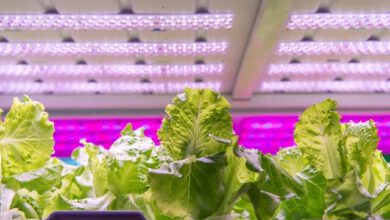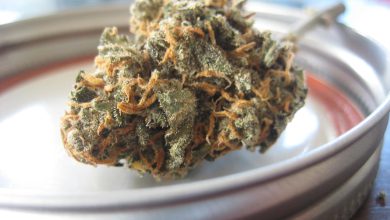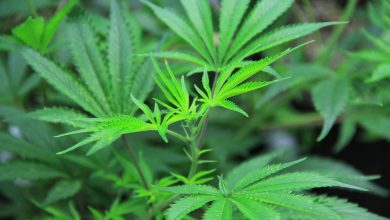Advances in science-based fertilization technologies for medical cannabis
So, plants ‘hungry’ for nitrogen, phosphorous or potassium produce higher levels of cannabinoids then plants that are supplied with optimal levels of these major macronutrients.
Dr. Nirit Bernstein, Nirit@agri.gov.il, Head of the Cannabis Physiology and Agronomy lab*

.jpg)
despite the high demand for cannabis products and the long history of cultivation by humanity, almost no science-based knowledge is available regarding the regulation of production of the therapeutic compounds in the cannabis plant, and particularly concerning effects of cultivation conditions. such information is vital for the optimization of cultivation for the production of high-grade material for the medical industry and for the development of plant products containing desirable phytochemical profiles for the pharmacological markets.
a major challenge for the production of high quality and uniform cannabis plant product for the pharmaceutical and recreational markets is the lack of science-based knowledge on the biology and agronomy of the cannabis plant. to bridge this knowledge gap, my lab focuses on developing cultivation practices for the cannabis plant to achieve optimal chemical medical properties and excelled yield. for this purpose, we study responses of the plant to a wide array of cultivation conditions including fertilization and irrigation, light quantity and quality, stress conditions, and modification of the plant microclimate. we are especially interested in the regulation of the chemical therapeutic quality of the plant.
the medical effects of cannabis are derived from its chemical constituents, encompassing hundreds of biologically active secondary metabolites, including terpenoids, flavonoids, and the cannabis-specific cannabinoids. biosynthesis and accumulation of secondary metabolites in plants are affected by genetics and environmental (cultivation) conditions. therefore, there is a considerable variability between cultivars of medical cannabis and between cannabis plants that are cultivated under different conditions, in the composition and dosage of the therapeutic compounds. mineral nutrients (fertilizers) are amongst the main cultivation factors affecting plant development and function. yet, only little information is available about the response of medical cannabis plants to mineral nutrition. therefore, my research emphasizes analyzing the response of medical cannabis to mineral nutrients, and development of optimal fertilization practices.

photo by, dalit morad
recent breakthroughs from our lab revealed that the production of the therapeutic secondary metabolites in cannabis is highly sensitive to mineral nutrition. we found that the amount and type of fertilizers supplied to the plants have a profound effect on the cannabinoids and terpenes in the plant. we identified considerable effects of nitrogen, phosphorous, potassium and magnesium fertilization on cannabis, and determined optimal concentrations for cultivation.
the studies were conducted in environmentally controlled growing rooms, under soilless cultivation. the impact of the nutrients on the plants was evaluated by many parameters related to plant growth, function, and metabolism.
nitrogen: nitrogen is the nutrient consumed by plants at the largest quantities. due to its central role in biosynthesis of essential compounds in the plant and its involvement in regulation of many vital plant processes, it is one of the critical factors regulating plant growth and metabolism. avia saloner, a ph.d student in my lab examined the response of medical cannabis plants to five levels of nitrogen (30, 80, 160, 240, and 320 ppm). optimal nitrogen level at the vegetative growth phase was 160 ppm (saloner and bernstein, 2020). at the flowering stage, although yield was highest under 160–320 ppm, it is not recommended to increase nitrogen supply above 160 ppm because it decreases the concentration of cannabinoids and terpenoids. for example, thca decreased by 69% with the increase in nitrogen supply from 30 to 320 ppm (saloner and bernstein, 2021). we concluded that the optimal nitrogen level for yield quantity that also allows relatively high content of secondary metabolites is 160 ppm.
potassium: potassium is involved in regulation of key processes in plants including photosynthesis, protein synthesis, enzyme activation, and stomata regulation. avia saloner studied the response of cannabis plants to five levels of potassium (15, 60, 100, 175, and 240 ppm). optimum supply rate at the vegetative growth phase was 175 ppm k (saloner et al., 2019). at the flowering stage, plants that received 60-175 ppm functioned optimally. however, the concentrations of most cannabinoids and terpenoids were highest under the lowest deficient concentrations, and declined with the elevation of k supply. thus, 60 ppm is the suggested application level to maintain high yield combined with high secondary metabolism.
phosphorous: phosphorus is an essential macronutrient and a key element in nucleic acids and phospholipids as well as in energy transfer processes in the cell. it therefore participates and affects central biosynthesis pathways. sivan shiponi, a m.sc. student in the lab studied the response of medical cannabis plants to five levels of phosphorous (5, 15, 30, 60, 90 ppm). at the vegetative stage, minimum supply for optimum growth and plant function was 30 ppm (shiponi and bernstein, 2021a). interestingly, at the flowering stage, the results for phosphorous as well revealed contrasting effects on cannabinoid concentrations, which were highest under deficient levels of phosphorous (smaller than 30 ppm), vs. yield quantity that was highest under 30-90 ppm supply (shiponi and bernstein, 2021b). sivan also studies effects of the micronutrients mn and zn on cannabis and these results will be available soon.
so, plants ‘hungry’ for nitrogen, phosphorous or potassium produce higher levels of cannabinoids then plants that are supplied with optimal levels of these major macronutrients.
magnesium: magnesium is an essential mineral nutrient that affects plant development and function. it participates in key metabolic processes in the plant including photosynthesis and biosynthesis of nucleic acids and proteins. dalit morad, a m.sc. student in the lab examined.the response of medical cannabis plants to five levels of magnesium (2, 20, 35, 70, 140 ppm). at the vegetative growth phase, 35 ppm magnesium supply was revealed as sufficient for optimal plant development and function. at the flowering phase, 20 ppm was sufficient for achieving the highest yield, but 35 ppm was required for the production of the highest cannabinoid concentrations. the response to magnesium is unique, as cannabinoid production was lowest rather than highest under deficient supply.
the information accumulated revealed that the therapeutic compounds in cannabis are dramatically affected by mineral nutrition. it highlights the potential of fertilization to regulate cannabinoid metabolism and optimize pharmacological quality, and takes us a step closer to the optimization of cannabis cultivation. my laboratory continues to study growth of cannabis to further develop optimal cultivation knowledge and technologies for the benefit of the growers, the medical community, and the patients.
*volcani center, israel
this article was published in ‘medical cannabis 2022’




